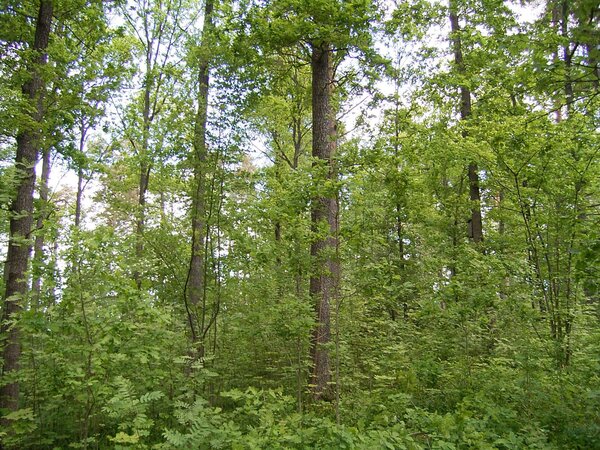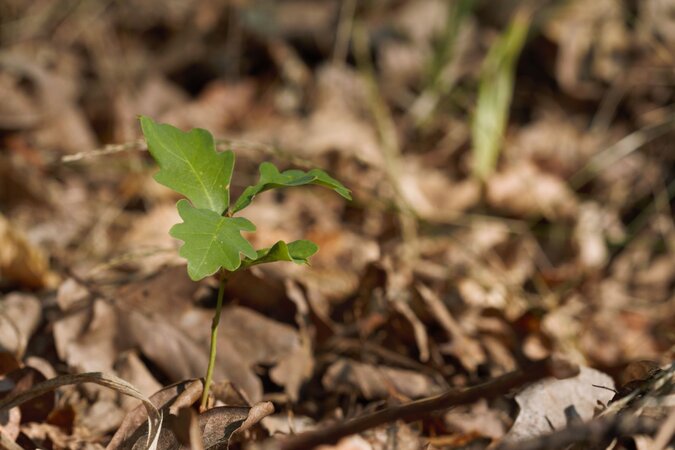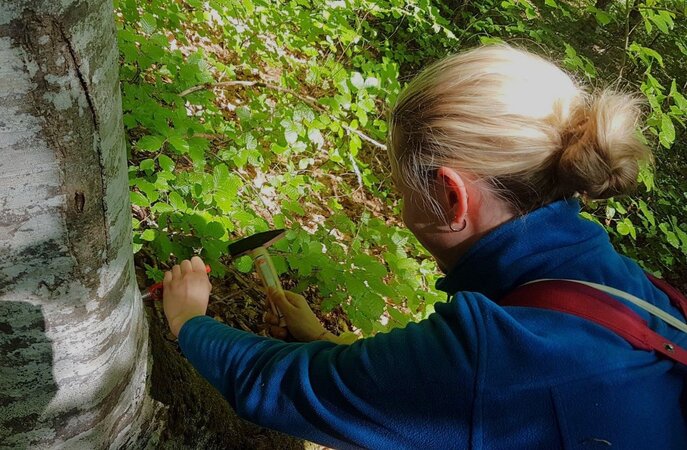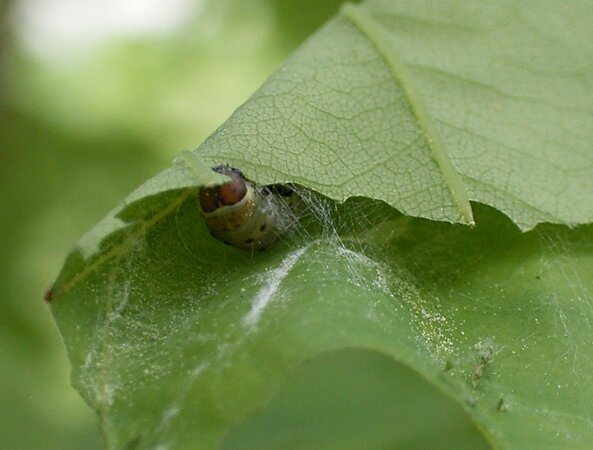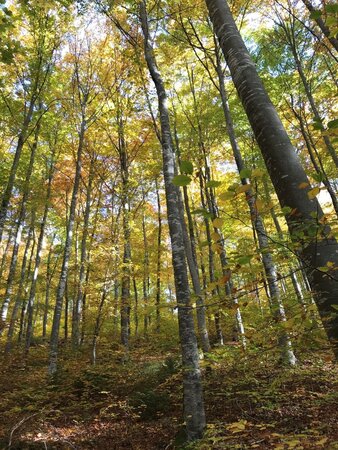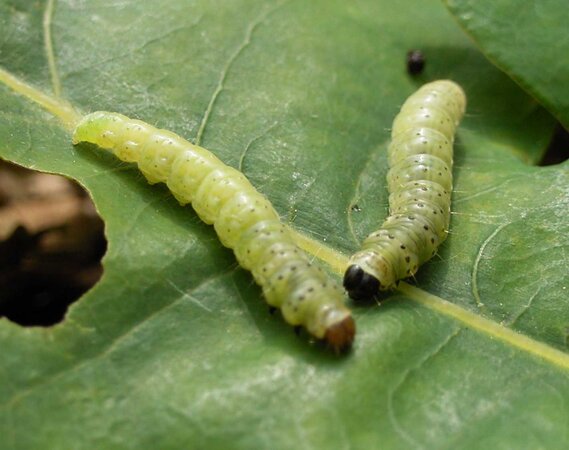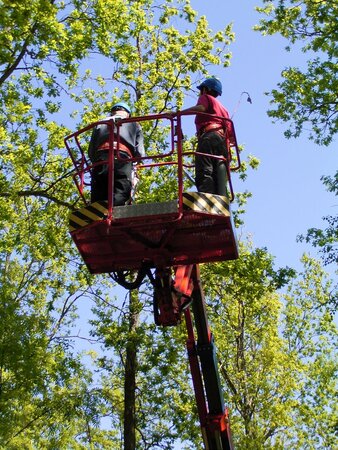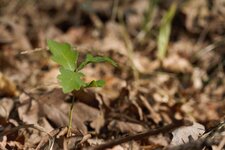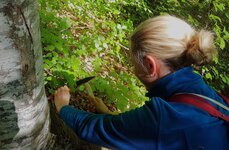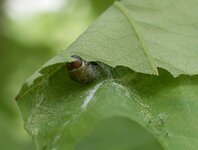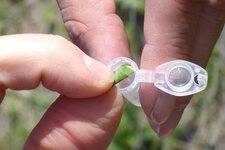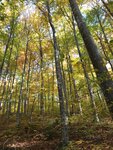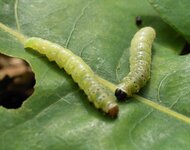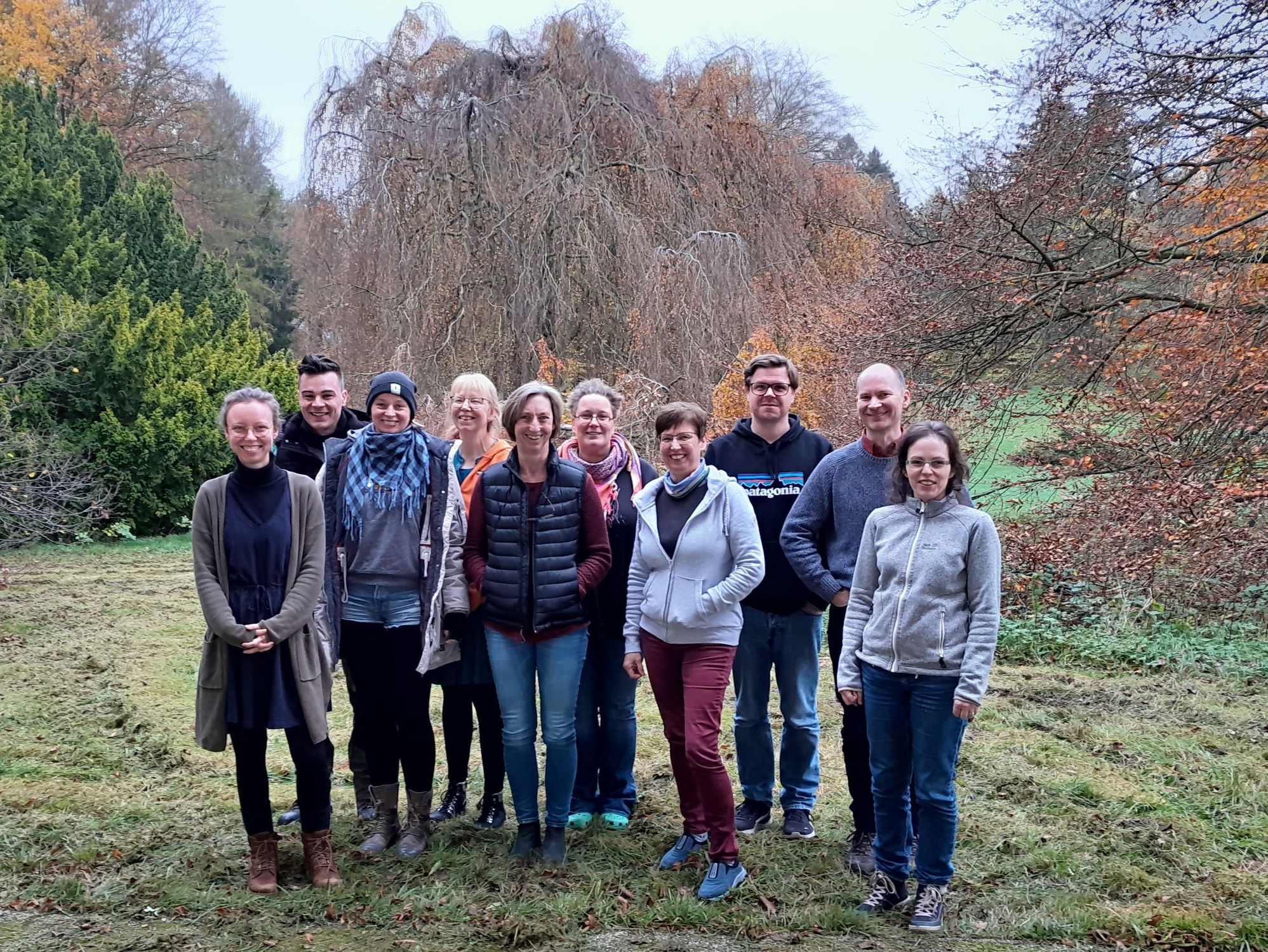Ecological Genetics
Ecological genetics covers all aspects of genetic variation in populations and species. Specifically, it examines how genetic diversity is spatially distributed, the extent to which populations and species are genetically similar or different, how genetic diversity is passed on between generations and how environmental changes or human activities affect these processes. These questions form the background to the research of the Ecological Genetics group.
One of our focal points is the identification of species and origin of wood and wood products. Here we work on the development and application of methods for identifying the species and geographical origin of tree species. We use genetic differences between species to develop gene markers for species identification. Additionally, we use spatial patterns in genetic variation within a species to identify the provenance of material of unknown origin. With these methods, we cover the genetic part of the Thünen Center of Competence for Wood Origin. In addition to genetic methods, we are also testing the use of stable isotopes in collaboration with the Thünen Institute of Climate-Smart Agriculture to determine the origin.
We use intergenerational approaches to investigate how genetic diversity is passed on from parents to offspring in forests. The relationships, spatial structures and differences between generations uncovered this way form the basis on which we derive conclusions for the preservation of genetic diversity and to develop strategies for the production of genetically high-quality forest reproductive material. This includes recommendations for approval criteria for seed stands and the establishment of seed orchards.
Studies on the relationship between spatial-genetic patterns and environmental conditions, post-ice age migration routes or human influences provide us with insights into genetic structures relevant to adaptation. We use these to understand the genetic basis of ecologically important traits such as tolerance to drought stress or insect infestation.
In addition to intra-species genetic diversity, species diversity is an important component of all forest ecosystems. In this context, we use genetic methods to analyze the species spectrum of vertebrates or insects, for example to analyze the food spectrum of wolves, to support biodiversity monitoring in forests, and to study other aspects of biodiversity in forest ecosystems.
PEOPLE
Group Leader
Scientific Staff
Technical Staff
- Imke Burau
- Marcel Claren
- Björn Klinkhammer
- Vivian Kuhlenkamp
- Stefanie Palczewski
- Marika Pusch
SELECTED PUBLICATIONS
Here we present selected publications that illustrate the spectrum of our current studies, research interests and methods.
Eusemann P, Rees J, Kuhlenkamp V, Lippitsch P, Schumann H (2024): Dietary analysis of wolf (Canis lupus) - a comparison of markers and methods. Conservation Genetics Resources. Link
Liesebach H, Eusemann P, Höltken AM, Tröber U, Kuchma O, Karopka M, Becker F, Kätzel R, Fussi B (2024): Effective population size of adult and offspring cohorts as a genetic monitoring tool in two stand-forming and wind-pollinated tree species: Fagus sylvatica L. and Picea abies (L.) Karst. Conservation Genetics. Link
Pakull B, Schneck V, Liesebach H (2024): Clonality in black locust (Robinia pseudoacacia L.) and implications for seed production. Annals of Forest Science. Link
Bäucker C, Liesebach H, Liesebach M (2023): Das Potential des Spitz-Ahorns besser nutzen: Einblicke in die Pflanzenanzucht für die Anlage von Feldversuchen. Thünen Report. Link
Bertic M, Orgel F, Gschwendtner S, Schloter M, Moritz F, Schmitt-Kopplin P, Zimmer I, Fladung M, Schnitzler JP, Schroeder H, Ghirardo A (2023): European oak metabotypes shape digestion of the herbivore Tortrix viridana. Functional Ecology. Link
Schroeder H, Kersten B (2023): A small set of nuclear markers for reliable differentiation of the two closely related oak species Quercus robur and Q. petraea. Plants. Link
Blanc-Jolivet C, Mader M, Bouda ZH-N, Massot M, Dainou K, Yene G, Opuni-Frimpong E, Degen B (2021): Development of new SNP and INDEL loci for the valuable African timber species Lophira alata. Conservation Genetics Resources. Link
Degen B, Yanbaev YA, Mader M, Ianbaev R, Bakhtina S, Schröder H, Blanc-Jolivet C (2021): Impact of gene flow and introgression on the range wide genetic structure of Quercus robur (L.) in Europe. Forests. Link
Schröder H, Nosenko T, Ghirardo A, Fladung M, Schnitzler JP, Kersten B (2021): Oaks as beacons of hope for threatened mixed forests in Central Europe. Frontiers in Forests and Global Change. Link
PROJECTS
CURRENT PROJECTS
Thünen Centre of Competence on the Origin of Timber [TKH]
As part of the TKH, we develop methods for the genetic determination of tree species and geographical origin of wood samples. Since the EU Timber Regulation came into effect in March 2013, up to 450 wood samples have been analyzed annually for the correct declaration of species and origin.
Genetic diversity of Scots pine in Germany [GenDivKiefer]
Knowledge of genetic variation and its patterns is a necessary basis for the conservation and sustainable use of forest genetic resources. We study the genetic diversity and genetic structures of Scots pine on the basis of an extensive Germany-wide sample.
Adaptation potential of oaks to biotic and abiotic stress in the context of climate change [Survivor-Oaks]
English oak is a beacon of hope under climate change conditions. The aim of the project is to provide oaks plants that show an increased tolerance to biotic and abiotic stressors, with a particular focus on tolerance to fungi, insects and drought.
Research Focus Genetics and Dendroecology of European Beech – Drought Stress, In-Vitro-Propagation and Genomics [BucheTIG]
European beech (Fagus sylvatica) is the most important native broad-leaved tree species in Germany, both ecologically and economically. The study of adaptation and adaptive potential of beech towards climate changing is therefore of central importance.
Assessment of adaptability and growth performance of Norway maple (Acer platanoides) [SpitzAhorn]
Norway Maple is a native tree species in Central Europe and Germany. However, the species has so far only a minor role in forestry. Better knowledge of adaptability and suitability of different provenances of Norway maple can help to improve the potential of the species in forestry.
SELECTED COMPLETED PROJECTS
Genetic inventories as part of the German National Forest Inventory 2021-2022 [Forstgenetik_BWI]
The German National Forest Inventory studies how much forest there is in Germany, how it structured, and how it changes over time. Genetic analyses will help us in answering these questions in more detail in the future.
Wood-DNA-barcoding
The aim of the project is the development and validation of genetic marker sets for the detection of frequently used deciduous and coniferous tree genera in wood composite products.
For the first time, a genetic monitoring program is set up for European beech and Norway spruce in Germany. The aim is to assess the species’ genetic variation and the state of the genetic system and to study changes to these on spatial and temporal scales.
Drought risk and adaptive potential of different Norway spruce populations [Fichte-Trockenheit]
Among the major tree species in Germany, Norway spruce is considered to be particularly sensitive to drought. Planners and decision-makers in the forestry sector assume an increasing cultivation and management risk for this economically important tree species.
ALL PUBLICATIONS
- 0
Bross D, Schröder H, Pers-Kamczyc E, Kersten B (2025) DNA markers targeting three cellular genomes for the discrimination between Taxus baccata, T. cuspidata and their hybrid. Tree Genetics Genomes 21:14, DOI:10.1007/s11295-025-01696-8
- 1
Pakull B, Degen B, Schröder H, Riedel T, Mader M, Liesebach H, Hoffmann P, Hoppe S, Eusemann P (2025) Hybridization, spatial genetic structure and potential environmental preadaptation in Quercus robur and Quercus petraea in Germany - results from the 4th National Forest Inventory. Tree Genetics Genomes 21(2):11, DOI:10.1007/s11295-025-01695-9
- 2
Nosenko T, Schröder H, Zimmer I, Buegger F, Orgel F, Burau I, Sivaprakasam Padmanaban PB, Ghirardo A, Bracker R, Kersten B, Schnitzler JP (2025) Patterns of adaptation to drought in Quercus robur populations in central European temperate forests. Global Change Biol 31(4):e70168, DOI:10.1111/gcb.70168
- 3
Pakull B, Schneck V, Liesebach H (2024) Clonality in black locust (Robinia pseudoacacia L.) and implications for seed production. Ann Forest Sci 81:39, DOI:10.1186/s13595-024-01257-4
- 4
Köhne JC, Buchen-Tschiskale C, Appelt J, Schwarz T, Schröder H, Degen B (2024) Comparison of three milling methods for wood homogenisation for stable isotope and element analyses. In: ASI 2024 43th Meeting of the German Association for Stable Isotope Research "Stable isotopes in geoscience, ecology, environmental science, medicine, and forensics": 30 September-2 October 2024; Book of abstracts. p 22
- 5
Lewandrowski TL, Bäucker C, Meier-Dinkel A, Eisold A-M, Fuchs A, Hutter I, Karfik V, Quambusch M, Liesebach H, Schatz L, Schneck V, Wallbraun M, Reisenbach A, Hartz-Goiteom T, Haag V (2024) Die Riegelung des Holzes - Holzanatomie, Genetik und Pflanzenzucht entdecken neue Anhaltspunkte für die Bildung des Wachstumsmerkmals. In: 6. Holzanatomisches Kolloquium : 7. - 8. November 2024 in Dresden. Dresden: IHD, pp 22-27
- 6
Eusemann P, Rees J, Kuhlenkamp V, Lippitsch P, Schumann H (2024) Dietary analysis of wolf (Canis lupus) - a comparison of markers and methods. Conserv Genet Resources 16(3):217-220, DOI:10.1007/s12686-024-01356-4
- 7
Liesebach H, Eusemann P, Höltken AM, Tröber U, Kuchma O, Karopka M, Becker F, Kätzel R, Fussi B (2024) Effective population size of adult and offspring cohorts as a genetic monitoring tool in two stand-forming and wind-pollinated tree species: Fagus sylvatica L. and Picea abies (L.) Karst.. Conserv Genet 25(3):739-753, DOI:10.1007/s10592-024-01600-2
- 8
Lazic D, Geßner C, Liepe KJ, Lesur-Kupin I, Mader M, Blanc-Jolivet C, Gömöry D, Liesebach M, González-Martínez SC, Fladung M, Degen B, Müller NA (2024) Genomic variation of a keystone forest tree species reveals signals of local adaptation despite high levels of phenotypic plasticity [Preprint]. Cold Spring Harbor: bioRxiv, 20 p, DOI:10.1101/2023.05.11.540382
- 9
Lazic D, Geßner C, Liepe KJ, Lesur-Kupin I, Mader M, Blanc-Jolivet C, Gömöry D, Liesebach M, González-Martínez SC, Fladung M, Degen B, Müller NA (2024) Genomic variation of European beech reveals signals of local adaptation despite high levels of phenotypic plasticity. Nature Comm 15:8553, DOI:10.1038/s41467-024-52933-y

![[Translate to English:] [Translate to English:]](/media/_processed_/f/3/csm_2022_Titelbild_gross2_Saatgut_in_Hand_9ffb8f5748.jpg)
![[Translate to English:] [Translate to English:]](/media/_processed_/f/3/csm_2022_Titelbild_gross2_Saatgut_in_Hand_c17270fcc0.jpg)
